

So what makes being a vegetarian better than others? Well for starters, vegetarians tend to weigh lesser and show lesser risks of cardiovascular disease and diabetes than people who consume a lot of meat. Merely cutting down the portions of your meat intake also helps improve your health. But then again, meat is full of protein which your body needs at the end of the day. Fear not for we have for you, 20 high-protein vegetables, legumes, and minimally processed meat alternatives:
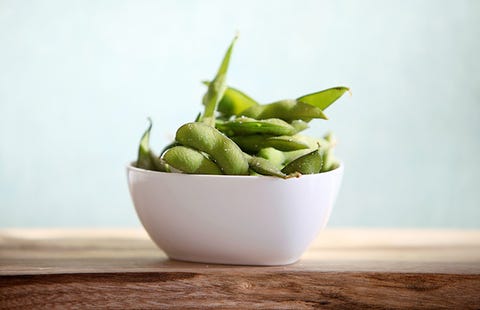 Protein: 18 g per 1-cup serving (cooked)
Protein: 18 g per 1-cup serving (cooked)
This appetizer could arguably be the healthiest snack ever. Even one cup of edamame or maybe cooked soybeans have a very high amount of protein in them. Where can you get these? Well, they would be available anywhere at an organic variety, but like most soybeans in the US, these are genetically modified with pesticides.
 Protein: 16 g per 3 oz serving
Protein: 16 g per 3 oz serving
Yes, we know, it looks like meat. Actually, tempeh is fermented cooked soybeans, converted into a thick cake that can be sliced or even pan-fried much like tofu. It's nutty, chewy, and contains more protein and fiber. Due to the fact that it is fermented, tempeh is also very easy to ingest and digest.
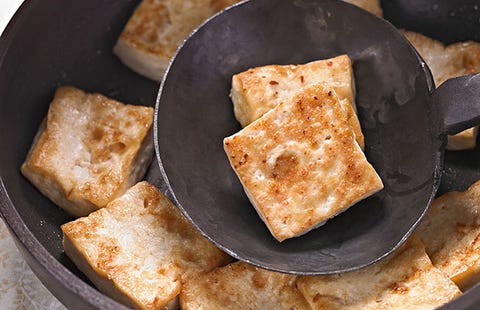 Protein: 8 to 15 g per 3 oz serving
Protein: 8 to 15 g per 3 oz serving
Tofu can honestly be said as the classic vegetarian blank slate which is made out of curdled soymilk. it is yummy when pan-fried and can even be stir-fried or scrambled. It has lesser protein than tempeh but the taste is said to be better. You must remember to choose organic varieties to stay away from tofu that has pesticides in it. Tofu is truly a versatile vegetarian snack.
 Protein: 9 g per ½-cup serving
Protein: 9 g per ½-cup serving
Low-cal, high-fiber, and high-protein. These may be the most precise description when it comes to lentils. Lentils can also be transformed into a nutrient-dense side dish, veggie burger, or even whipped to become a dip like hummus. Also, lentils are known to be able to decrease cholesterol and reduce the risk of heart disease.
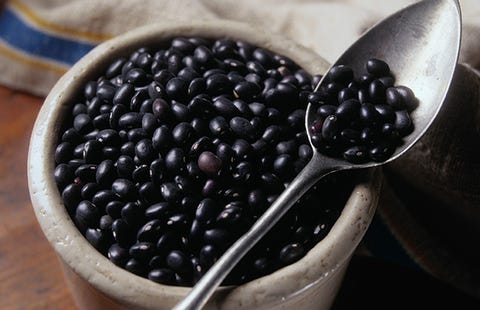 Protein: 7.6 g per ½-cup serving (cooked)
Protein: 7.6 g per ½-cup serving (cooked)
There is another vegetable that can come to the rescue when you want to have a protein-laden snack but want it to be strictly vegetarian: black beans. Black beans are also heart-healthy fiber, rich in potassium, folate, vitamin B6, and several phytonutrients. So yes, if you want to maintain a nutritious meal or a healthy one, black beans are the answer.
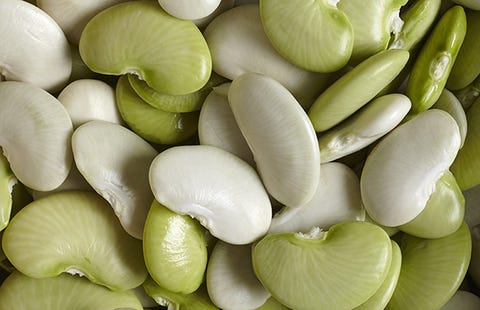 Protein: 7.3 g per ½-cup serving (cooked)
Protein: 7.3 g per ½-cup serving (cooked)
If you have been forced to eat lima beans ever since you were young, well, we have good news for you. These beans are known to be good in filling protein in your body, lima and they also contain amino acid leucine. This would essentially mean that you will have a healthy muscle synthesis for adults that eat lima beans regularly.
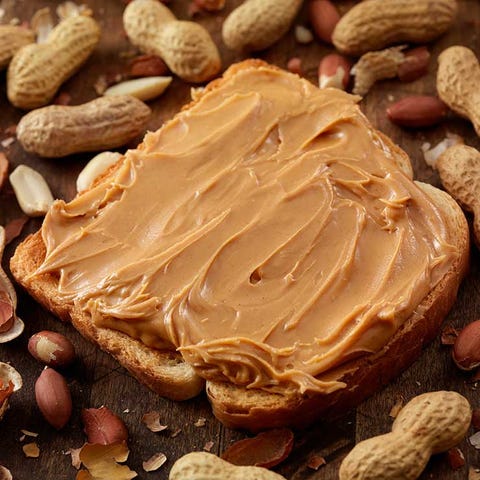 Protein: 7 g per ¼-cup serving (or 2 Tbsp peanut butter)
Protein: 7 g per ¼-cup serving (or 2 Tbsp peanut butter)
We are all well aware that peanut butter is the comfort food that we all loved as children. You can even eat them with pizza. If you have them during breakfast, they can help you consume less during lunchtime called the second-meal effect. Smucker's Natural Peanut Butter is a brand that does not add sugar, so it is still healthy.
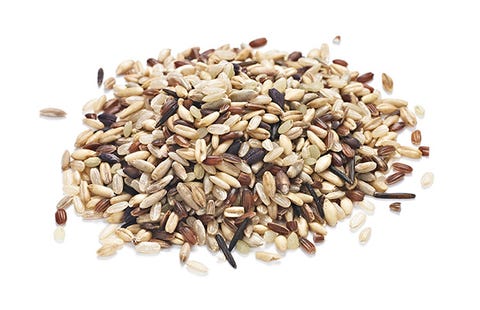 Protein: 6.5 g per 1-cup serving (cooked)
Protein: 6.5 g per 1-cup serving (cooked)
Quinoa is not the only food item that can be good for your health. Wild rice is a grain that is rich in protein that you should definitely start consuming more and more. It has a nutty taste and slightly chewy texture which basically means that it would be more satisfying. It is a versatile grain that you can experiment on.
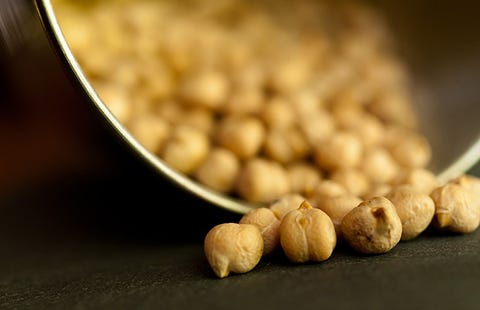 Protein: 6 g per ½-cup serving
Protein: 6 g per ½-cup serving
Chickpeas have a combination of protein and fiber which obviously translates to a healthy dip. You can make a sandwich with it, replacing the mayo, or serve them with veggie slices. You can also make use of chickpeas to bake Flourless Banana Blender Muffins if ever you feel like eating a savory-sweet treat.
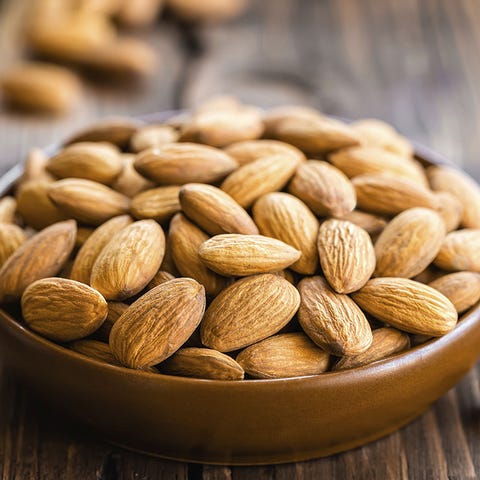 Protein: 6 g per ¼-cup serving
Protein: 6 g per ¼-cup serving
Almonds are not only protein-rich but also contains a heavy dose of vitamin E, which helps you have a healthy skin and hair. Almonds also make up 61% of the daily recommended intake of magnesium that can assist you with your sugar cravings, soothe PMS-related cramps, upgrade your bone health, and reduce muscle soreness and spasms.
 Protein: 6 g per 2 Tbsp
Protein: 6 g per 2 Tbsp
Chia seeds contain loads of protein even if they come in pint-sized orbs. They also contain a lot of alpha-linolenic acids (ALA) which is a plant-based omega-3 fatty acid. Also, omega-3s which chia seeds contain can boost the stimulation of the satiety hormone leptin, that ends up burning fats instead of just storing them.
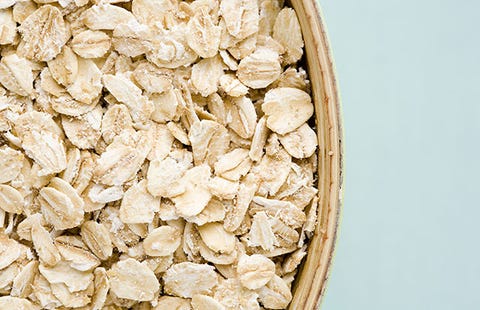
Protein: 5 g in ¼-cup serving (dry)
Steel-cut oats are not just the solid source of protein. they have a lot of other advantages as well. They can help to lower glycemic index even more so than rolled oats. This would result in maintaining the blood sugar levels to a he2althy amount. In the end, your cravings will be controlled and you will feel more satisfied after eating them.
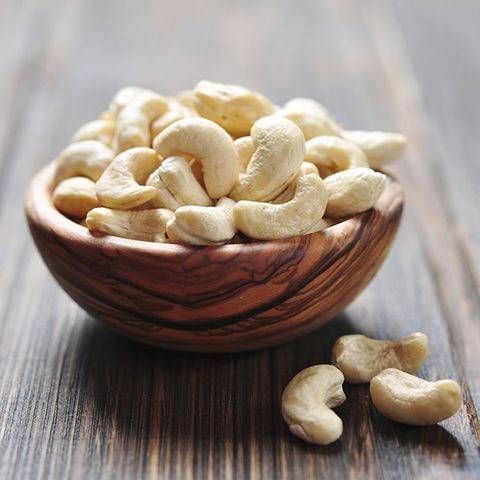 Protein: 5 g per ¼-cup serving
Protein: 5 g per ¼-cup serving
Cashews have a moderate amount of proteins stored in them and also take up 20% of the recommended intake of magnesium. Moreover, it makes for 12% of the recommended intake of vitamin K. These two are essential as they are bone-building nutrients. Hence you must remember to eat a healthy amount of cashew every meal.
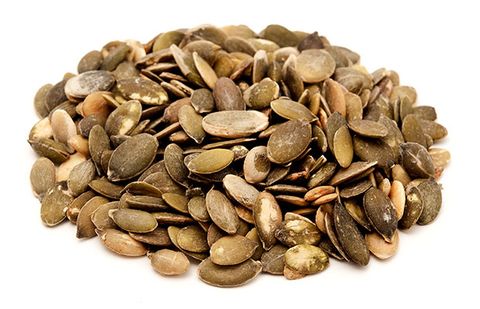 Protein: 5 g per ¼-cup serving
Protein: 5 g per ¼-cup serving
Pumpkin seeds as we all know are a good means of getting required protein. They are known to be nutrient powerhouses as they make up half of the daily intake needed for magnesium, and also contain immune-boosting zinc, plant-based omega-3s, and tryptophan. These are important for you to have a good night's sleep.
 Protein: 4 g in 1 medium white potato
Protein: 4 g in 1 medium white potato
Potatoes are one of the most common means to get protein in your body. Even though potatoes are notorious for contributing very less when it comes to nutrition, a medium-sized spud has around 4 g of protein. Also, potatoes occupy 20% of the recommended daily intake of heart-healthy potassium.
 Protein: 3 g per ½-cup serving (cooked)
Protein: 3 g per ½-cup serving (cooked)
Even though 3 g does not seem like an abundant amount, for a green veggie, it is actually a very high amount. You can do more than just making a salad out of this vegetable. We have all seen 'Popeye The Sailor-man' who constantly relies on spinach for energy, so why not get creative and start cooking it in different approaches.
 Protein: 2.5 g per ½-cup serving
Protein: 2.5 g per ½-cup serving
Similar to potatoes, corn is always seen in the "plants with no redeeming qualities" category, but if they are cooked with a protein-rich vegetable and legumes, it transforms into a protein-packed plant-based dish. You must remember to get an organic or non-GMO fresh or frozen variety and avoid buying genetically modified ones.
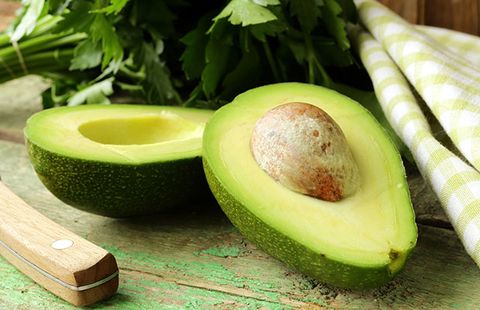 Protein: 2 g per ½ avocado
Protein: 2 g per ½ avocado
We have all met one person in our lives that live and die by avocados. People who love avocados seem to swear by the fruit. Well, at least they are eating healthy. Avocados have a creamy, dream texture and can fill up one's stomach to the brim. It contains monounsaturated fatty acids and a certain amount of protein.
 Protein: 2 g per ½-cup serving (cooked)
Protein: 2 g per ½-cup serving (cooked)
Broccoli is a vegetable that is rich in fiber. You might be surprised to discover the amount of protein it contains too. They have been proven to deliver cancer-preventing properties so you know you cannot g wrong with broccoli. They are also versatile as you can stir-fry, boil or eat them raw.
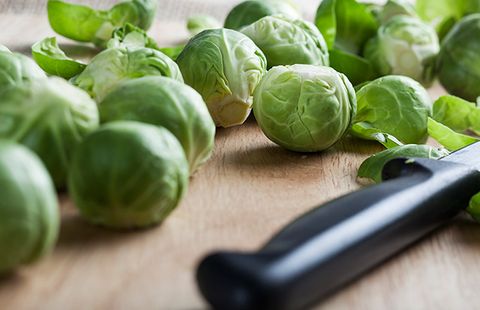 Protein: 2 g per ½-cup serving
Protein: 2 g per ½-cup serving
Yes yes, we all know about the fact that Brussels sprouts are not the most delicious vegetables out there. The frozen variety of Brussels sprouts are even more appalling to the tongue. However, they are nutritional superstars that have been proven time and time again to be very healthy. In addition to protein, they contain potassium and vitamin K as well.